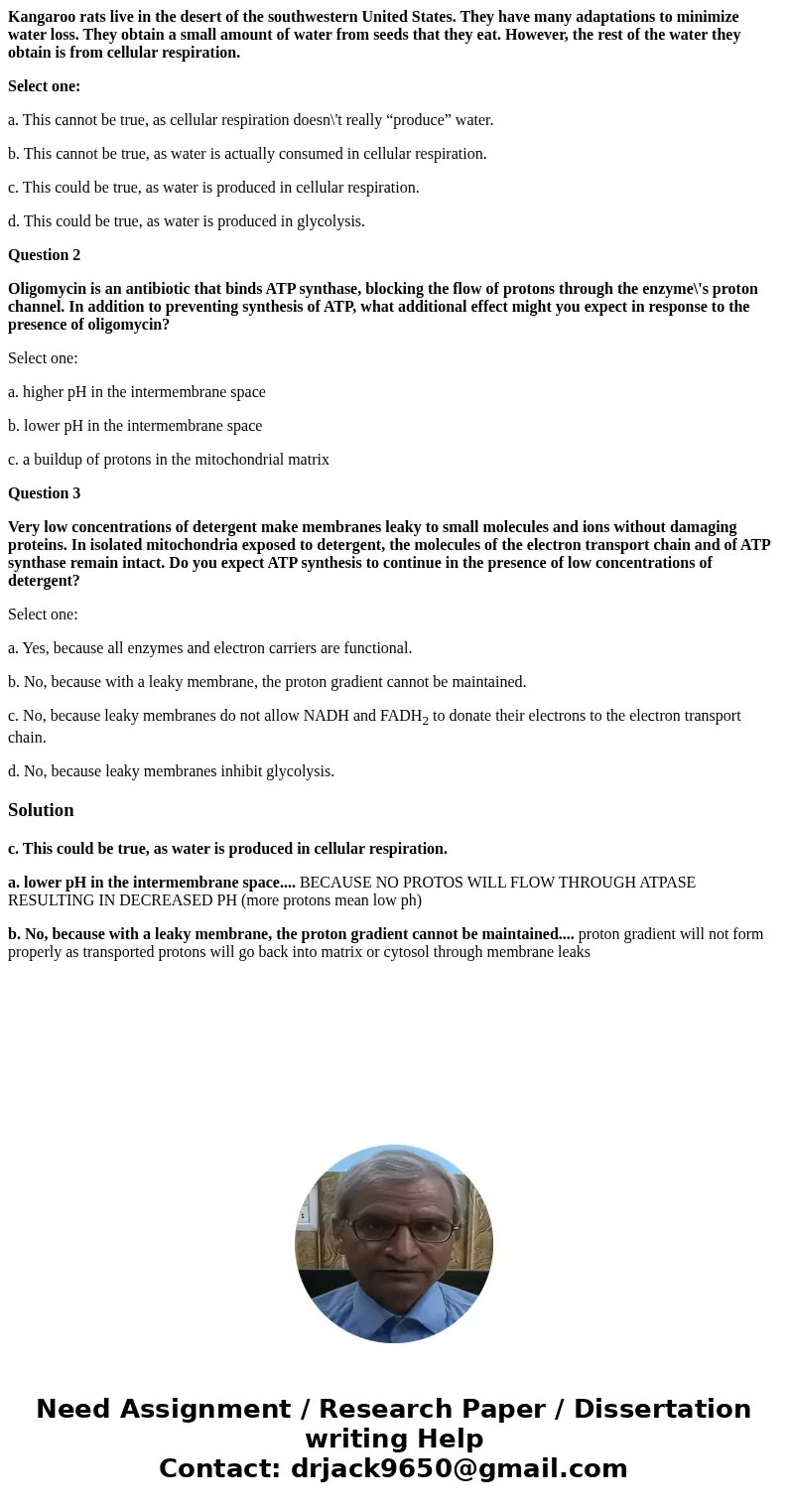Kangaroo rats live in the desert of the southwestern United
Kangaroo rats live in the desert of the southwestern United States. They have many adaptations to minimize water loss. They obtain a small amount of water from seeds that they eat. However, the rest of the water they obtain is from cellular respiration.
Select one:
a. This cannot be true, as cellular respiration doesn\'t really “produce” water.
b. This cannot be true, as water is actually consumed in cellular respiration.
c. This could be true, as water is produced in cellular respiration.
d. This could be true, as water is produced in glycolysis.
Question 2
Oligomycin is an antibiotic that binds ATP synthase, blocking the flow of protons through the enzyme\'s proton channel. In addition to preventing synthesis of ATP, what additional effect might you expect in response to the presence of oligomycin?
Select one:
a. higher pH in the intermembrane space
b. lower pH in the intermembrane space
c. a buildup of protons in the mitochondrial matrix
Question 3
Very low concentrations of detergent make membranes leaky to small molecules and ions without damaging proteins. In isolated mitochondria exposed to detergent, the molecules of the electron transport chain and of ATP synthase remain intact. Do you expect ATP synthesis to continue in the presence of low concentrations of detergent?
Select one:
a. Yes, because all enzymes and electron carriers are functional.
b. No, because with a leaky membrane, the proton gradient cannot be maintained.
c. No, because leaky membranes do not allow NADH and FADH2 to donate their electrons to the electron transport chain.
d. No, because leaky membranes inhibit glycolysis.
Solution
c. This could be true, as water is produced in cellular respiration.
a. lower pH in the intermembrane space.... BECAUSE NO PROTOS WILL FLOW THROUGH ATPASE RESULTING IN DECREASED PH (more protons mean low ph)
b. No, because with a leaky membrane, the proton gradient cannot be maintained.... proton gradient will not form properly as transported protons will go back into matrix or cytosol through membrane leaks

 Homework Sourse
Homework Sourse